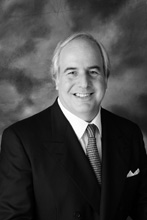In one sense, Frank Abagnale Jr. might seem an odd choice as a featured speaker at a cutting-edge, computer-ruled event like the Wharton Technology Conference 2007. That’s not just because Abagnale — the subject of the 2002 Steven Spielberg movie “Catch Me If You Can” — was one of the most notorious con men of the 20th century, but also because his technique was so decidedly low-tech.
Consider what Abagnale — a teenager at the time — did in the mid-1960s when he faked his identity as a Pan Am pilot, a move that allowed him to travel more than one million miles and visit some 250 cities in 26 countries, free of charge. A key element of his scheme involved faking a Pan Am ID card, a process he completed by taking the logo from an airplane model kit sold at a hobby store.
Indeed, while Abagnale’s riveting lecture was alternately humorous and poignant, it also contained an underlying message: Vigilance against fraudsters and con artists should be even more of a priority now than it was then, because Abagnale’s 1960s schemes were harder work.
“What I did more than 40 years ago is now about 4,000 times easier to do because of technology,” Abagnale said in a brief interview after his speech. “When I used to print checks, I needed a Heidelberg printing press — it was a million-dollar machine, it was 90 feet long and 18-feet high, and it required different printers and color separators and negatives. Today, I can open up a laptop, create a check from a large, existing Fortune 500 company, capture their logo from their web site, print it on their check and come out with a perfect document in a matter of just minutes.”
Breeding Ground for Cons
Indeed, Abagnale — who today runs a highly successful security consulting firm out of Tulsa, Okla. — works hard to keep up with today’s computerized and Internet-based fraud. But instead of perpetrating elaborate scams, for more than three decades Abagnale has worked to prevent them as an advisor on theft prevention for both the FBI and a roster of corporate clients.
He never lacks for work, especially in the Internet age. “Technology tends to breed cons, and it always will,” he said. “There are always people willing to use technology in a negative, self-serving way.”
While he was working the criminal side of the fence, Abagnale stole close to $3 million (mostly by writing bad checks), impersonated not only a pilot but also a pediatrician, and passed the Louisiana bar exam. He even landed a job with the state’s attorney general’s office. Arrested in France, he served time in French, Swedish and American jails for forgery. After the release of “Catch Me If You Can,” which was based on his autobiography and which featured Leonardo Dicaprio as Abagnale, he became a minor celebrity.
Although the movie closely follows his unbelievable but true exploits, Abagnale said it differs in at least one key respect — his relationship with his father (played by Christopher Walken in the movie). In real life, according to Abagnale, his life of crime was triggered by his parents’ divorce when he was 16, an event that not only traumatized the teenager but caused him to never see his father again.
As Abagnale tells it, he had an uneventful upbringing in the affluent suburbs of Westchester County, N.Y., until the day he was unexpectedly picked up at his strict Catholic high school and driven to a Family Court hearing. “I was ushered into the back of an immense courtroom, where my parents were standing before a judge,” Abagnale said. “I couldn’t hear what the judge was saying, but eventually … he motioned to me to approach the bench. I walked up to stand between my parents, but I remember distinctly that the judge never looked at me, never acknowledged I was standing there, but simply read from his papers that my parents were getting a divorce, and because I was 16 years of age, I would need to tell the court which parent I chose to live with.”
Abagnale said that he started to cry, and the judge called a recess. By the time the court reconvened, the teenager was long gone. He had boarded a commuter train for Manhattan, where he launched his nomadic existence.
At first, Abagnale — who said he looked about 10 years older than he was — tried to support himself with real work, augmenting his earnings by writing checks on his legitimate bank account from Westchester. But he soon changed the age on his driver’s license to 26 to try for better jobs, and kept writing checks even when his real money ran out.
Eventually, the 16-year-old knew police were looking for him in New York. Abagnale was walking down 42nd Street when he happened to see an Eastern Airlines flight crew leaving the old Commodore Hotel to board a shuttle van for the airport. “As they loaded the van, I thought to myself, ‘That’s it, I could pose as a pilot,'” Abagnale recalled. “I can travel all over the world for free. I can probably have anybody just about anywhere cash a check for me.”
He called the purchasing department of Pan Am, making up a tall tale about a lost pilot’s uniform as he went along. Soon he had the address of the airline’s clothing supplier and was fitted for his pilot’s uniform. Now properly attired, he headed to the nearest airport, which was New York’s LaGuardia, and walked around trying to figure out how to board a flight. He stopped for lunch, and found himself sitting next to a TWA captain.
“The captain kind of leaned over and said, ‘Hey, young man, how’s Pan Am doing?'” Abagnale recalled. “I responded: ‘Pan Am’s doin’ just fine, captain.’ He said: ‘What’s Pan Am doing out here at LaGuardia? Pan Am doesn’t fly into LaGuardia. They only go into Kennedy.'” In his haste to execute the scam, Abagnale had gone to the wrong airport. He told the TWA captain he was visiting a friend, but then the real pilot asked Abagnale what kind of “equipment” he used. “I thought, what the heck is ‘equipment’? The only equipment I’m on is this stool.” He didn’t know that he was being asked, in pilot jargon, what kind of plane he flew.
So Abagnale went to the drawing board. That’s when he talked his way into a phony Pan Am ID, working the phones to find the vendor, inventing a story that he was investigating a potential large purchase, and walking away with a demo with his picture. That’s how that Pan Am logo from a model kit came in so handy.
Indeed, as Abagnale addressed his computer-savvy Wharton audience, it seemed that the lack of advanced technology in the 1960s aided and abetted his scams. He learned that airlines had reciprocal check-cashing agreements, and so he would walk up and down a terminal, cashing bad checks as he went along. When the shift changed, he walked in the other direction, working the same counters.
In the interview afterwards, Abagnale said advanced technology cuts both ways. “You know, when I said I forged checks, people would say to me, ‘How did you know who signed Pan Am’s checks?’ I said I had no idea. ‘How did you know where they are drawn?’ — I would just make that up. I had no idea….
“Today, I can call any company in America, big or small, access accounts receivable on the phone and say I’m getting ready to wire them some funds. They will [give] me the bank [I should use], its street address and its account information. I can pull any annual report from a company and have the signature of the chairman of the board, CEO or CFO, and sign a check knowing that [it has] the signature of an authorized person.”
The Less Glamorous Side
For Abagnale, getting out of a life of crime in the 1960s proved harder than getting in. When he decided to end his fraud against Pan Am, and tried to settle down with his ill-gotten gains at a posh apartment complex in Atlanta, Ga., he told his neighbors that he was a non-practicing pediatrician looking to invest in real estate. It worked well for a while, until a real pediatrician moved in.
Eventually, Abagnale was asked to fill in as an overnight supervisor at a Georgia hospital. “Being one who hates to pass up a challenge, I couldn’t help but give it a shot,” he said. Fortunately, no one died during his time at the medical center. Abagnale went on to pose as a lawyer and a teacher before he was finally nabbed in Paris in 1969, after five long years.
Today, with his fame compounded by the movie, Abagnale says he gets many emails, some saying he was a genius for the cons that he pulled off. But he replies that he was just a teenager, and that “had I truly been a genius, I don’t think that I would have found it necessary to break the law in order to survive. Although I know that people are fascinated with what I did 40 years ago as a boy, I have never lost sight of [the fact that] what I did was immoral, illegal and unethical.”
He also tried to dispel some of the mythology about his youthful exploits, saying he regrets the normal experiences he missed, like high school football games or the prom. “How could I tell you my life was glamorous?” he asked rhetorically. “I cried myself to sleep until I was 19 years old, every Christmas, birthday, Mother’s Day and Father’s Day, in a hotel somewhere in the world where people didn’t speak my language.”
In the end, Abagnale brought a touching dose of humanity to a conference that focused so much on technology. “Steven Spielberg made a wonderful movie,” he concluded, “but the truth is, I’ve done nothing greater, nothing more rewarding, nothing more worthwhile, nothing that’s brought me more peace, joy and happiness … than being a good husband and good father.”


